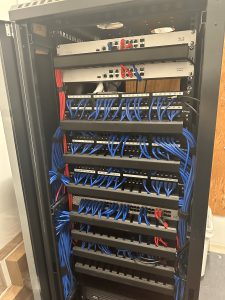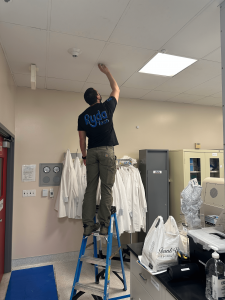Structured Cabling
Structured cabling for server racks involves the installation of a network of cables and connectors that connect network devices, such as servers, switches, and storage devices, to each other and to the data center network. Structured cabling is a standardized approach to cabling infrastructure that provides a reliable and flexible foundation for data center networks.
At Ryda Tech here are the key components of our services:
- Patch panels: A patch panel is a device that connects cables from various devices to a central point, allowing for easy management and organization of cables. In the case of server racks, patch panels are used to connect cables from servers, switches, and other devices to a centralized switch or router.
- Cable management: Cable management involves the use of trays, racks, and other tools to organize and route cables in a neat and tidy manner. Proper cable management helps to reduce cable clutter, improve airflow, and make it easier to troubleshoot and make changes to the network.
- Ethernet cables: Ethernet cables are used to connect devices within the data center network. These cables come in various lengths and types, including Cat5e, Cat6, and Cat7, and can support different data rates and transmission distances.
- Labeling and documentation: Proper labeling and documentation of the cabling infrastructure is essential for easy identification and troubleshooting. This includes labeling cables, patch panels, and other components, as well as creating documentation that outlines the network topology and cable routing.
When designing and installing structured cabling for server racks, it is important to consider factors such as cable length, cable type, transmission speed, and environmental conditions
We can help Design, build and test your environment.


Structured Cabling San Francisco
If you need Structured Cabling , contact Ryda Tech now! Ryda Tech is based in San Francisco, California.